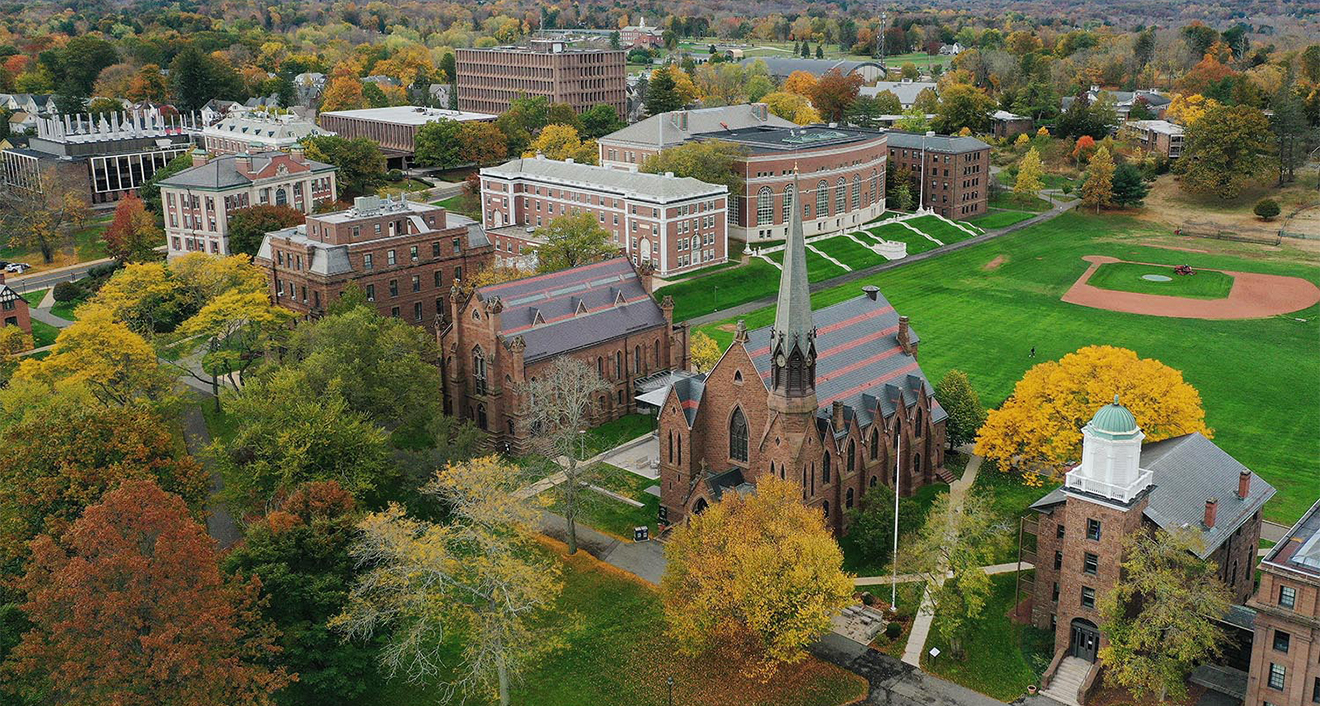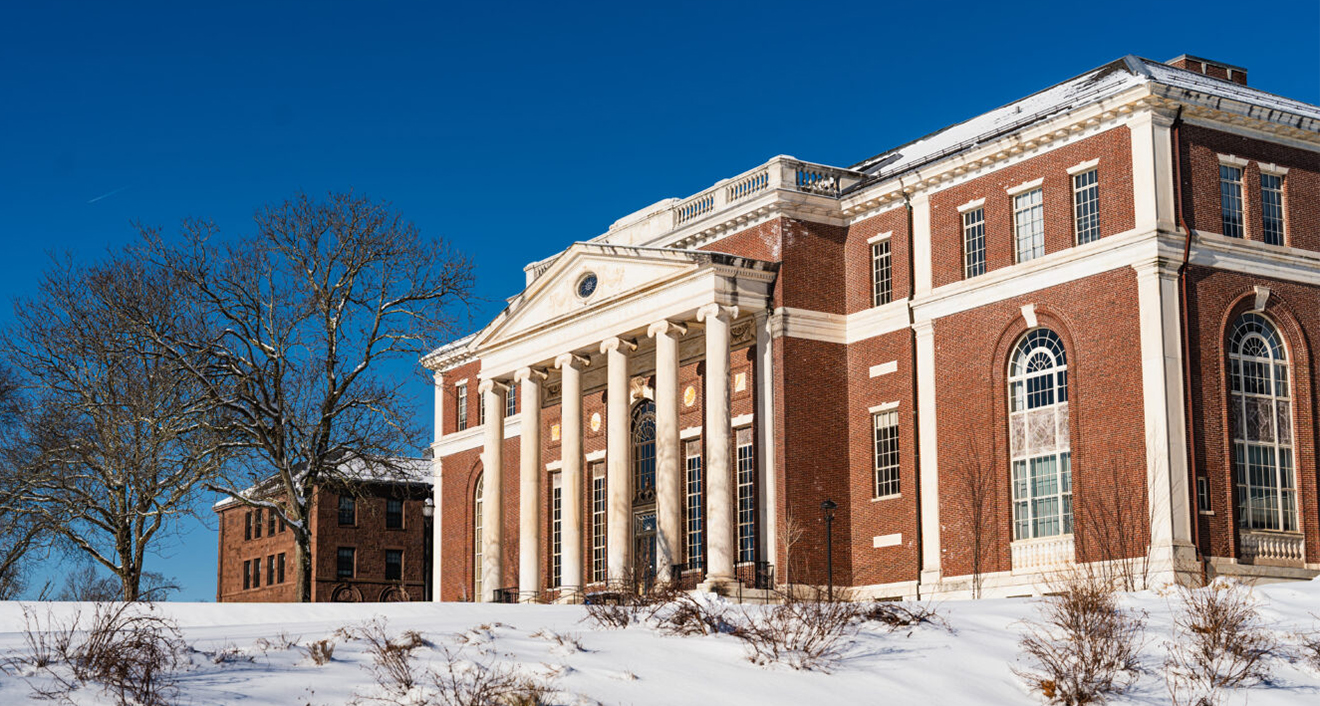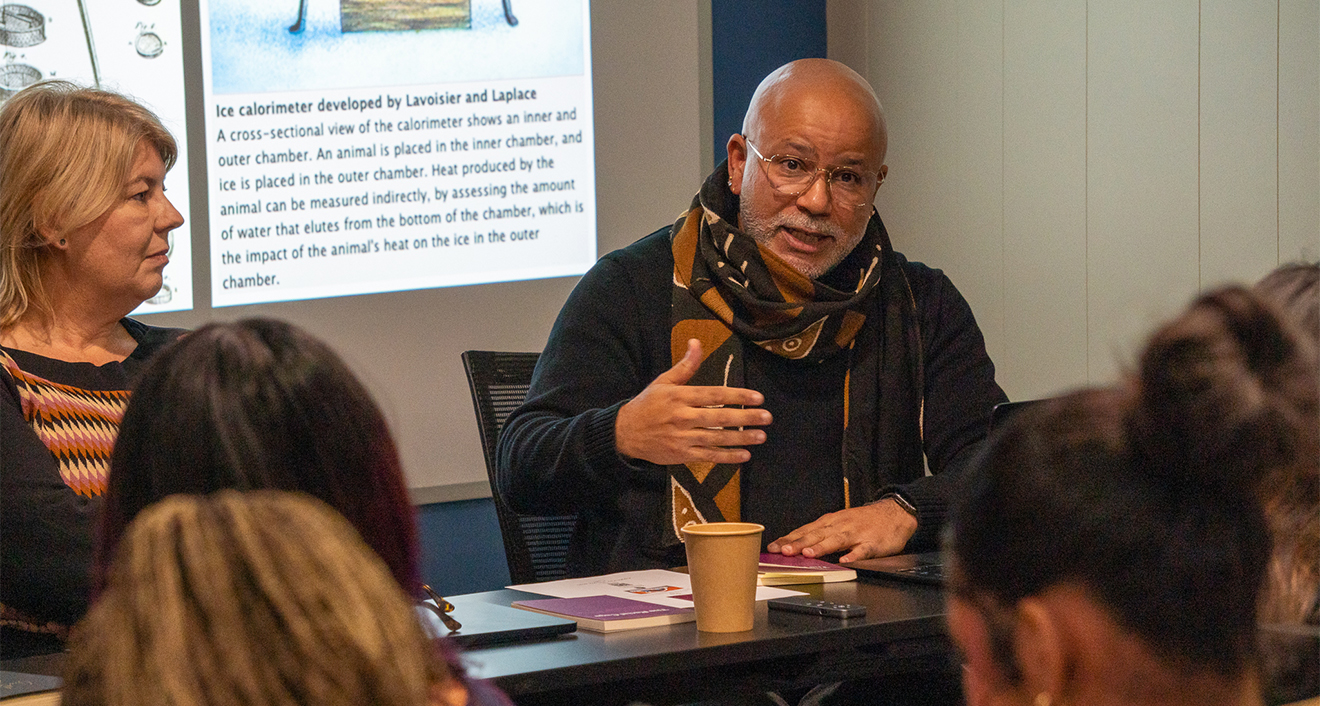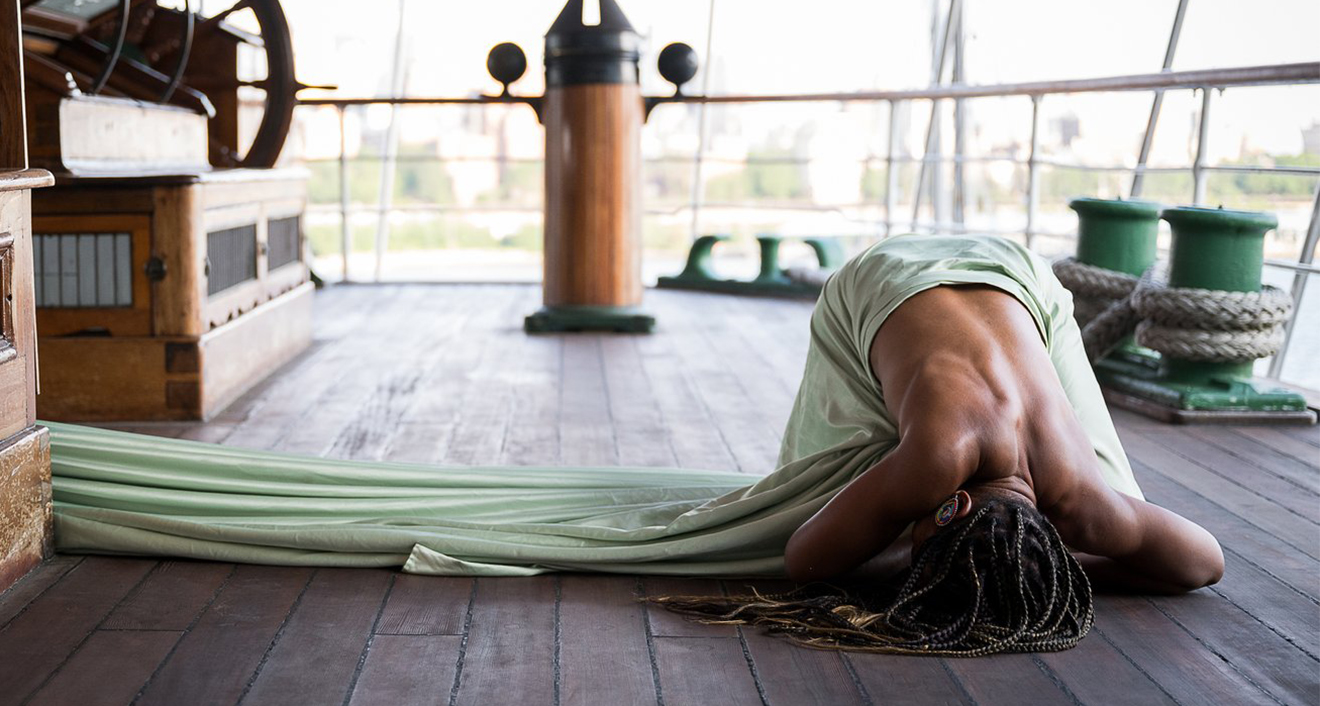
New Artist in Residence Uses Movement to Explore Grief, Loss

Reading from their poem "Whale Fall With Me," the 2025–2026 Center for the Arts (CFA) Artist in Residence mayfield brooks described their recent work as an “opera somewhere in the void,” conjuring dreams in an empty theater while whale songs haunt them like spirituals or Billie Holiday’s song "Strange Fruit."
Embracing practices and politics of grief, loss, and decomposition, brooks uses dance and movement to explore the entangled relations of human and non-human worlds. “The through line in all of this is my singing, and I call them whale arias,” brooks said.
On April 14, CFA Director Joshua Lubin-Levy ’06 welcomed brooks and their collaborator Camilo Restrepo for their first campus visit. The artists shared insight into their work during the third event in the CFA’s AFTERWORDS series of public talks, which ask what happens after the encounter with the work of art, presented in conjunction with the course THEA 275 "All Together Now: Theater and Theatricality."
Lubin-Levy said he met brooks in 2020 and has been talking with them about this work for a long time. “The Center for the Arts continues to fund and create space for thinking about transformative futures, and art makes that possible,” Lubin-Levy said.
brooks will present a screening of their experimental dance film Whale Fall at Wesleyan during their residency. In the work in process, brooks has been researching whales and the ways in which they move as a collective through their watery worlds, sing to each other, grieve the death of their children, and feed new ecologies deep in the oceans when they die through a process known as “whale fall.”
Over the course the 2025–2026 academic year, brooks will work closely with the CFA as they complete the third part of their Whale Fall performance cycle, “Abyss,” which will include the creation of a new dance-film as well as a live performance in the CFA Theater in February 2026. With this final chapter, brooks asks the questions, “Who am I feeding? What am I feeding?” They note that the third chapter will focus on lineages of touch, entanglement—including the danger of whales getting tangled in fishing gear—and the ruse of romance.
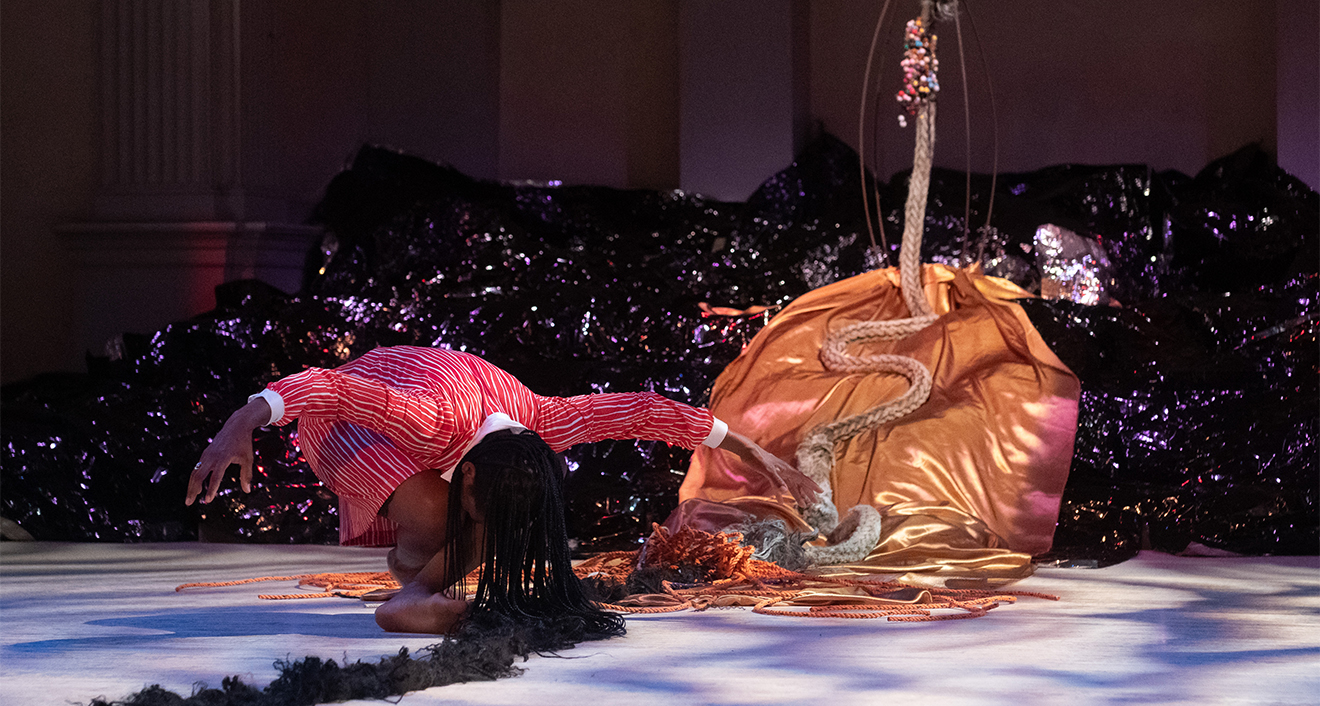
A native of Hartford, Connecticut, brooks said the genesis of the project began with their own experiences as an urban farmer and dancer in San Francisco and the South Bronx. “What came out of that was this really deep appreciation of how all these different aspects of my life were decomposing,” brooks said.
In September 2020, brooks read about the death of nearly 400 pilot whales on the coast of Tasmania, Australia. “It struck me as a kind of parallel event with everything that was happening in the world with COVID, and all the Black death,” brooks said. “It was an overwhelming feeling of grief for me that connected these mammals to human life.”
“I didn't really understand why I was grieving for these whales, but I think I was grieving for a lot of things,” brooks said.
After writing their "Whale Fall" poem, brooks went into New York’s Abrons Arts Center theater to rehearse and perform the work in 2021, and premiered the video in 2022. Iterations of the work have been performed in San Francisco, Miami, Poland, and Germany, evolving into an opera with seven other performers, and now includes cellist Dorothy Carlos, who will accompany brooks and Restrepo in “Abyss” as they improvise a dance duet and brooks performs the whale lament aria.
Whale Fall is a serial project that has taken many forms, but what joins the work together is, according to brooks, “the experience of being in the ancestral realm of the ocean, and also learning all of these incredible facts about whales.” brooks has been inspired by the matriarchal culture of whales—and dedicated the project to their great-grandmother Betty Chambers—as well as the history of the whaling industry’s entanglements with slavery and Indigenous and Black labor.
brooks and Restrepo met in 2022, when a whale washed up on Rockaway Beach in Queens, New York, where brooks now lives. “That was the moment when this intense feeling and work began about the ocean and about whales,” Restrepo said. “Our first language was movement.”
The duo founded Oceanicos Collective, which they describe as a journey to share their love for the sea, dance, community action, and climate justice. “We are working to bring attention to the urgency of the plight of the whales and what’s happening to the ocean that we’ve experienced firsthand through our travels,” brooks said. The two spent time with whales on the Pacific coast of Colombia as part of research that brooks initiated through their 2023 Hodder Fellowship at Princeton University.
“What if we could all be in that dialogue in an embodied way, becoming or acknowledging our oneness with the Earth, in whatever way that is?” brooks asked.
During their Wesleyan residency, brooks will also begin a new project on the interconnectedness of shorelines through the legacies of colonial extraction of Black bodies from Africa, ecological decay, and practices of rest and renewal. In this new work, ocean tides, waves, and shorelines will serve as an inspiration for how brooks and Restrepo dance together and apart, asking questions about what the body’s shoreline is like, and how different ecologies of cellular integration can emerge through voice, sound, and movement.
“I think these questions are very universal, but also can be very personal,” brooks said.


